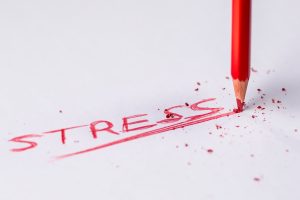Definition of a History Extended Essay
A History Extended Essay is an essay form that requires a student to provide an in-depth analysis of a chosen topic or event. It typically requires research, evidence collection, and thoughtful reflection on the part of the student. The essay should be structured logically, with a clear beginning, middle, and end. The goal is to demonstrate a thorough understanding of the chosen topic or event and to provide original insights and argumentation.
The essay should contain a thesis statement that sets out the main argument, and the body should then provide evidence and discussion to support the thesis. The essay should have a conclusion that summarises the findings, arguments, and evidence presented. Additionally, it should contain appropriate citations to sources throughout and a bibliography section at the end.
History Extended Essay essays can be written from many different perspectives, including geographical, chronological, political, social, and economic. Good research questions should be open-ended and enable exploration and discovery of multiple viewpoints.
Outline of a History Extended Essay
Constructing an effective outline for your History Extended Essay is essential to ensure that you create a clear and cohesive essay. The following advice will help you to create an outline that will enable you to craft a well-structured and successful essay.
Your essay should include three main sections: the introduction, main body, and conclusion. Each section has a particular purpose and contributes to the overall structure and argument of the essay.
Introduction
The introduction of your essay should serve two key purposes. First, you should provide a brief overview of the topic of your extended essay and its context. Second, you should introduce your research question and make it clear to the reader why this is an interesting area of study that is worthy of further investigation.
Main Body
The main body of your essay should be dedicated to outlining and elaborating upon the evidence that you have gathered in support of your research question. This should include both primary sources such as documents, photographs, and artifacts, and secondary sources such as scholarly works and historical analyses. By carefully examining, analyzing, and interpreting this evidence, you can develop your own arguments and insights in order to answer your research question.
Conclusion
The conclusion of your essay should bring your main argument to a close and suggest future avenues for study. You should also link back to the introduction, summarizing the main points of the essay. This is an important part of the essay because it shows readers what the main point of the essay was and how it reaches a conclusion.
By using these tips, you can ensure that your History Extended Essay has a clear and concise structure that allows you to clearly express your argument. With careful planning and preparation, you can be certain that your essay will be well-written and successful. Good luck!
Assessment Criteria for History Extended Essays
Understanding the criteria by which your History Extended Essay will be judged is essential to achieving the highest mark. The assessment criteria splits into 5 categories: knowledge and understanding; problem-solving ability; critical thinking; research skills; and writing and presentation. In this section, we will explain each of these criteria in detail.
Knowledge and Understanding
In assessing knowledge and understanding, markers will look to see how well you have absorbed information and facts related to your research question and topic. They will want to know to what extent you have engaged with content which goes beyond the scope of the research question. Further, they will be interested in how you have used that knowledge in constructing a compelling argument in your essay.
Problem-Solving Ability
This criterion focuses on two things: how well you have identified and defined the key problem in your essay and how effectively you have created a solution. Markers will be looking to assess your ability to think pragmatically and solve problems logically. You should pay particular attention to the evidence you present and the structure of your essay when trying to demonstrate your problem-solving skills.
Critical Thinking
To score highly for critical thinking, markers will want to see that you have considered both sides of the argument. Demonstrating critical engagement with the sources you use and providing evidence in support of your own views will be important here. Your essay should also show independent and creative thought, as well as an awareness of wider contexts, such as international or political implications.
Research Skills
To excel at this criterion, you must demonstrate a comprehensive knowledge of different source materials and an understanding of how to best utilize them. You should strive to come to conclusions independently and provide clear evidence in support of those conclusions. In addition, you must ensure that this evidence has been transcribed accurately.
Writing and Presentation
Finally, your essay should be presented impeccably and be free of spelling, grammar and punctuation errors. The essay should have been carefully proofread before handing it in. The content should be clearly structured and organized and the language should be concise and even-toned. Depending on the task, diagrams and illustrations might be necessary, as well as references and bibliography.
Brainstorming Process: How To Develop Brilliant Ideas
Brainstorming is an essential part of writing a successful History Extended Essay. It involves researching, identifying, and analyzing the facts, evidence, and arguments as well as coming up with interesting ideas and research questions.
The first step to brainstorming is to start by asking yourself questions, such as: What would be an interesting topic? What key arguments can I make? What evidence do I need to support those claims? Such questions will help guide your research.
Next, you should research your topic. Start by searching online, reading books, and watching videos or documentaries related to the subject. This will provide you with the necessary information to develop your research question or topic.
Once you have gathered sufficient information, it’s time to analyze it. Ask yourself questions such as: What are the main points? What evidence does each point have? What opposing views exist? By identifying and questioning the different arguments, you will be able to develop more robust and thorough ideas.
Finally, once you have carefully examined the available materials, you should create a list of potential research questions or topics. You should also think of ways to defend or challenge any of the points you have identified. Doing so will help you develop brilliant research questions, evidence and arguments for your essay.
Writing Strategies
Writing is an essential skill and being able to write effectively with structure, clarity and focus is an invaluable part of success in essay writing. Being able to convey arguments, ideas and facts in a succinct and clear manner is essential for an extended essay. Here are some tips to help you write clearly and effectively.
Structure
A well-structured essay is the key to an effective paper. You should start by creating an outline that shows what you plan to cover in each section. Your introduction should be succinct and give a brief overview of the main points of your argument. The body section should include evidence and analysis, using examples when necessary. Finally, your conclusion should draw everything together, summarize the points you have made and provide your reader with any conclusions you have reached.
Clarity
It’s important to ensure the sentences you use are concise and easy to understand. Make sure to use straightforward language, avoid overly complicated phrasing and make sure each sentence expresses one clear idea. It’s also imperative to break long sentences up into shorter ones and use active voice as much as possible.
Focus
In order to write clearly, you must maintain a clear focus throughout your essay. Stick to the point and avoid drifting off topic. Make sure each paragraph has a purpose and don’t engage in digressions or include irrelevant information. You should also ensure that each paragraph connects logically to the one before it and the one after.
Using these strategies when writing your history extended essay can help make sure that your essay is clear, organized and informative. Being aware of these tips and taking the time to incorporate them into your writing process can help you create a successful essay.








